Monarch Butterfly
 |
The Monarch is perhaps the best known and most loved butterfly in North America. This large, orange and black butterfly can be seen across the country in backyards, parks and fields.
Monarch butterflies (Danaus plexippus) are known for their long-range 3,000 mile mass migration that brings millions of them to California and Mexico each winter.
Monarch Butterfly Facts
The Monarch is a large butterfly, with no tails. It has rich orange coloration with black veins, and white spots on the black wing borders and on the body. Males have small, black scent glands on vein in the center of hind wings. Females have thicker black veins.
Its size is in the 3.5" - 4.0" range.
The Monarch coloration and markings are similar to the Soldier and Viceroy butterflies.
Milkweed is the host plant for the Monarch Butterfly.
Monarch Butterfly Migration
The Monarch will always return to areas rich in milkweed to lay their eggs upon the plant. The milkweed they feed on as a caterpillar is actually a poisonous toxin and is stored in their bodies.
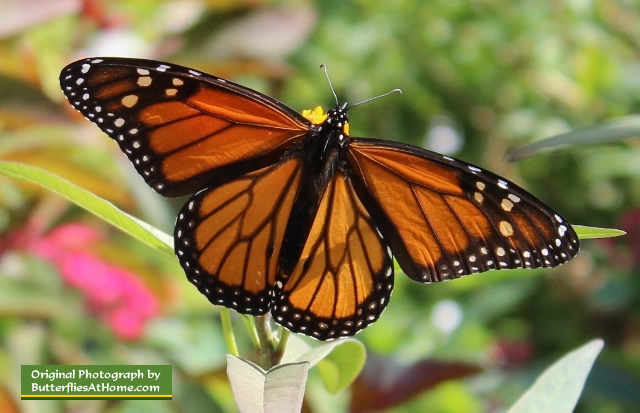 |
This is what makes the Monarch butterfly taste so terrible to predators. Monarchs can produce four generations during one summer.
The first three generations will have life spans from 2 - 5 weeks and will continue moving north. During this time they will mate and have the next generation that will continue the northward migration.
The fourth generation is different and can live up to nine months.
The migration progresses at a pace of 25-30 miles per day, although individual butterflies often fly further during periods when conditions are favorable.
Most Monarchs originate from locations more than 1,500 miles from the overwintering sites. The duration of the migration appears to be 2-2.5 months.
Monarch Migration Map
As Monarchs migrate across the United States, Journey North operates a mapping system to track movements. At this website, you can read about current Monarch migration reports and progress and view a map of the 2025 Monarch migration.
Comparison of the Female and Male Monarch Butterflies
Shown below is an identification guide to the female and male Monarch Butterfly.
Males have small, black scent glands on vein in the center of hind wings. Females have thicker black veins.
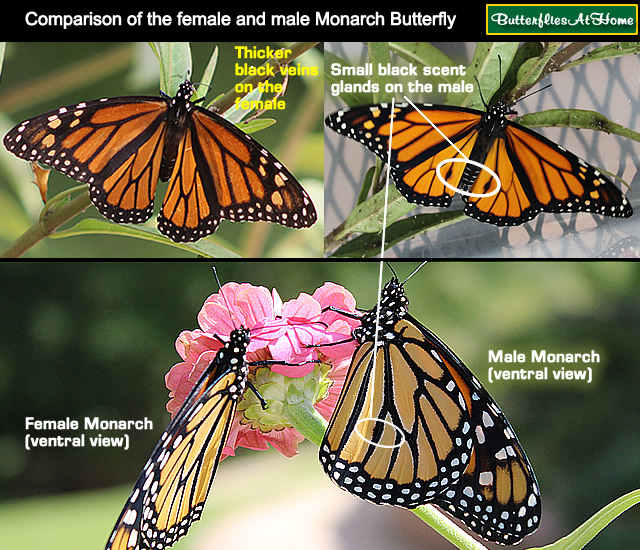

Comparison of Monarch Butterfly Look-A-Likes: Queen, Viceroy and Soldier
Shown below is an identification guide to butterflies that are similar in coloration and markings to the Monarch. Included are the Viceroy, Queen and Soldier ... the "Royal Court" of butterflies! 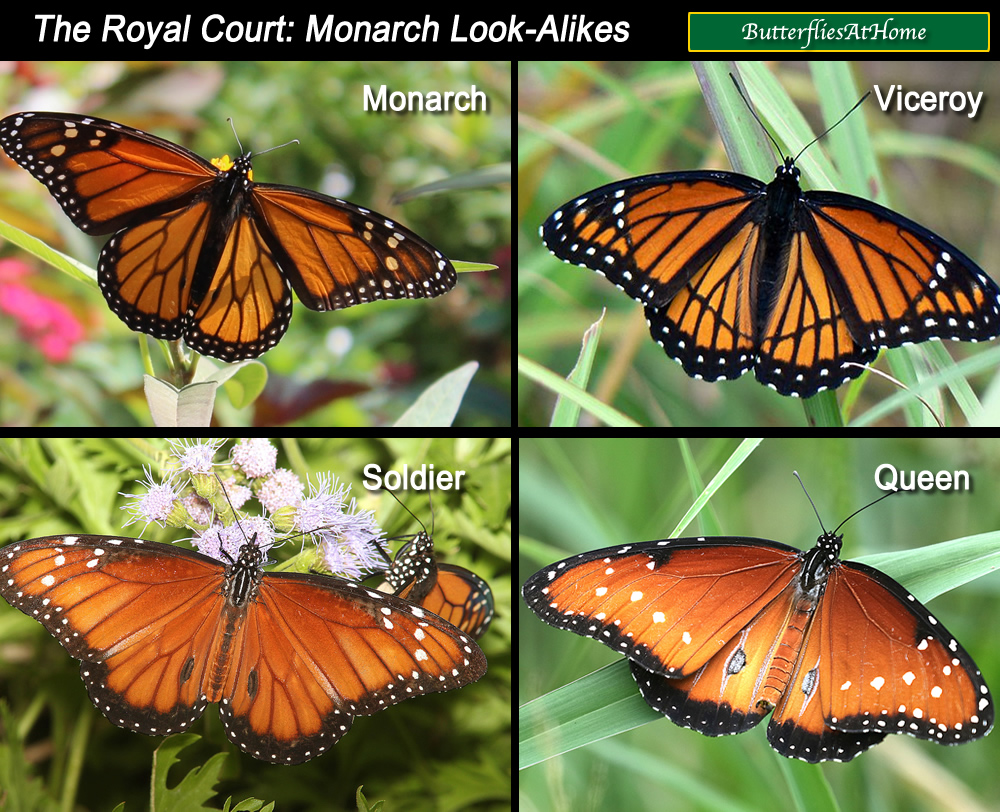

Is It a Monarch, Queen or Black Swallowtail Caterpillar?
The caterpillars of the Monarch, Queen and Black Swallowtail all feature white, yellow and black markings. But which one are you seeing? Check the images below for the differences between the three caterpillars.
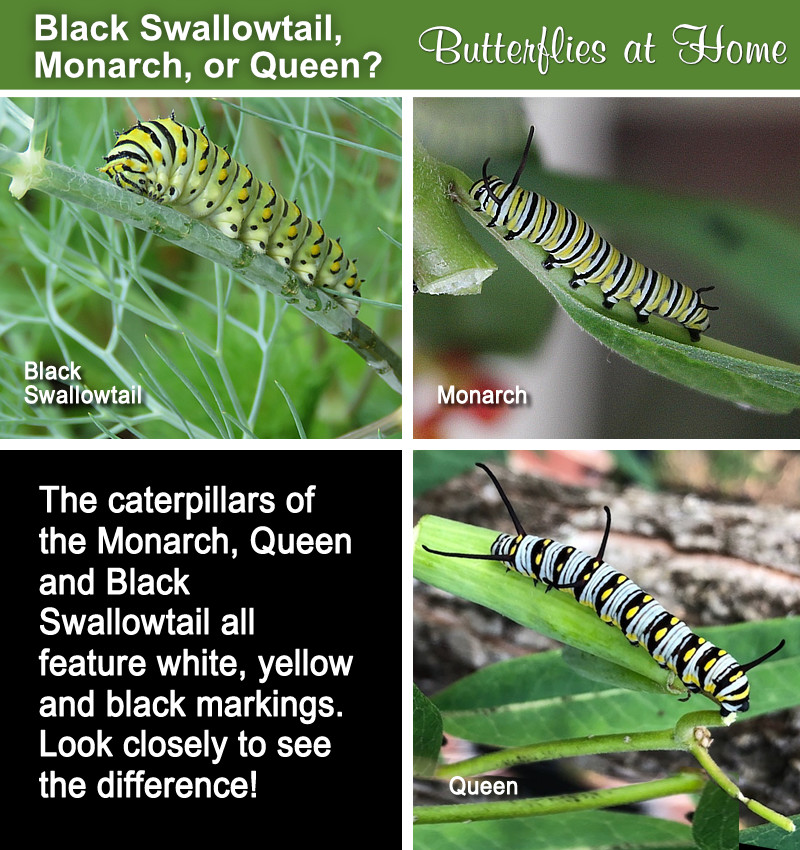

Monarch Butterfly Photos
Male Monarch Butterfly feeding on Lantana
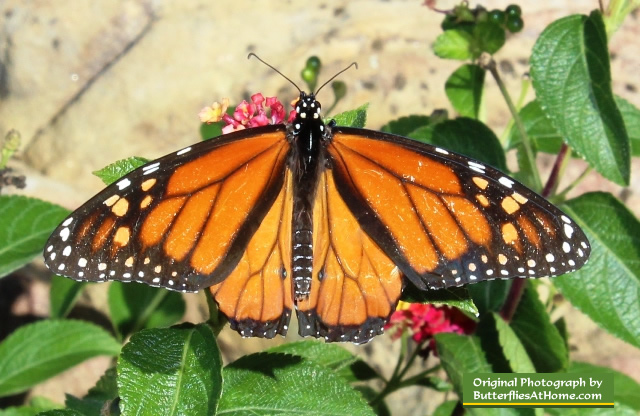
Male (l) and female (r) Monarch Butterflies on a pink Zinnia
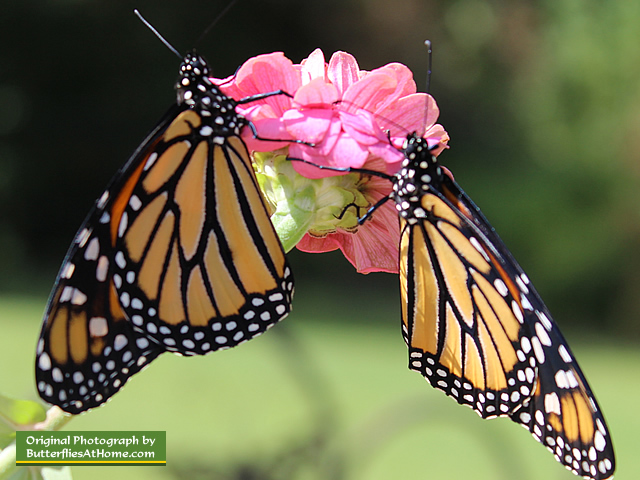
Monarch Butterfly Life Cycle
| Stage | Typical Duration |
| Egg stage | Generally 4 to 6 days |
| Caterpillar (larval) stage | 2 to 3 weeks |
| Chrysalis (pupal) stage | 5 to 15 days |
| Adult butterfly stage | 2 to 5 weeks for the summer generations, but the over-wintering generation in Mexico can live several months |
Monarch Butterfly egg
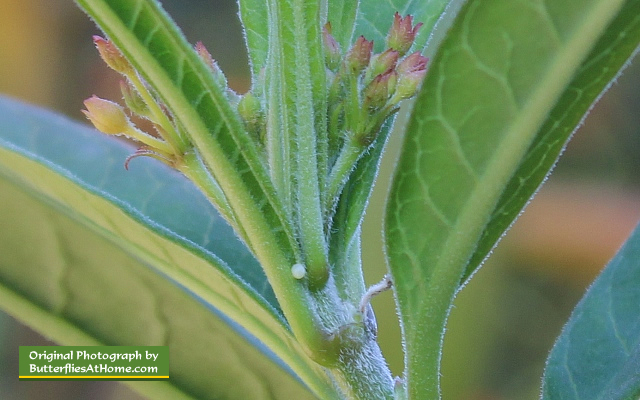
Monarch Butterfly caterpillar ... right after hatching, eating its egg casing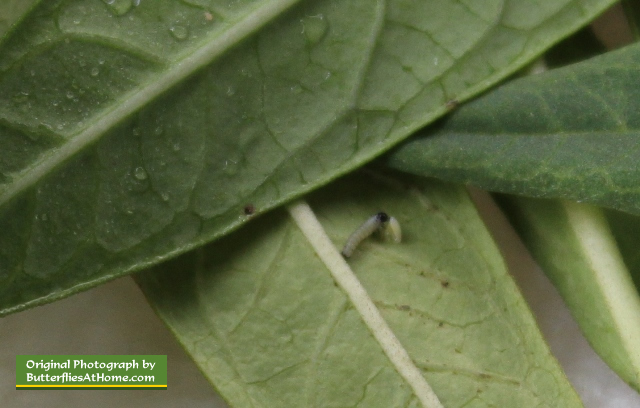 |
Monarch Butterfly caterpillar ... 7 days from egg laying ... size compared to a straight pin
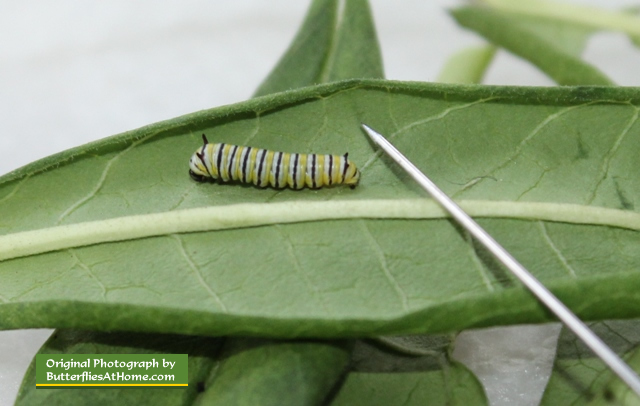
Monarch Butterfly caterpillars ... nearing maturity
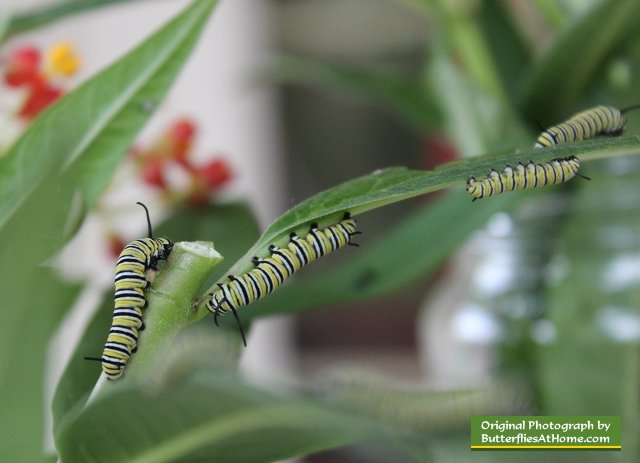
A mature Monarch Butterfly caterpillar
roaming on Zinnias, looking for the perfect place to assume the "J" Position
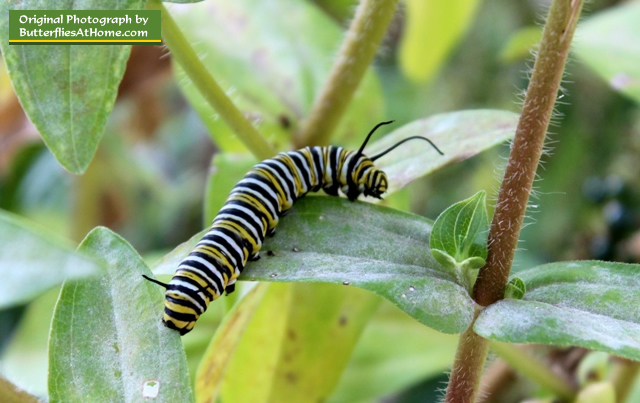
Monarch caterpillar relaxing out of the "J" position, body stretched, feelers limp
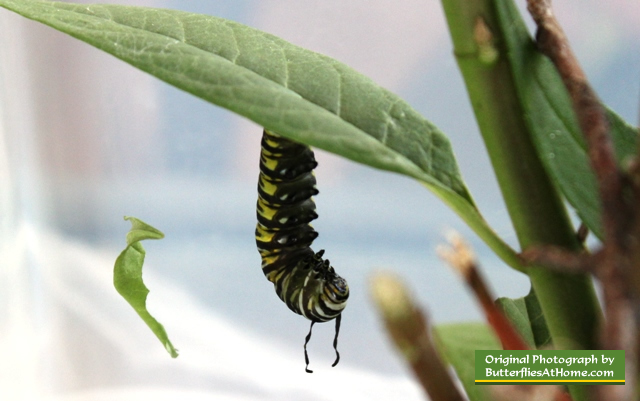
Monarch caterpillar entering the chrysalis ... it's a quick transformation!
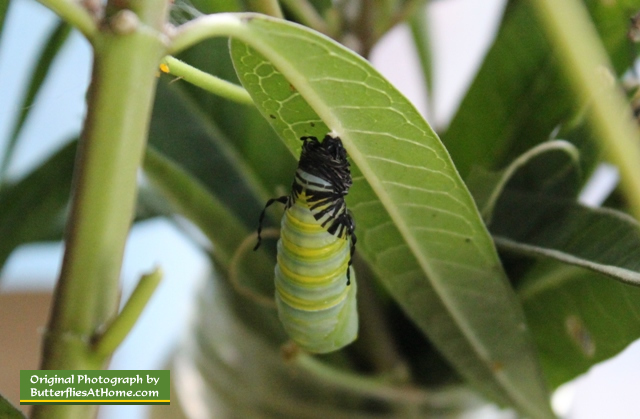
Monarch caterpillar with its chrysalis nearly complete ... the remaining "skin" will soon be dropped
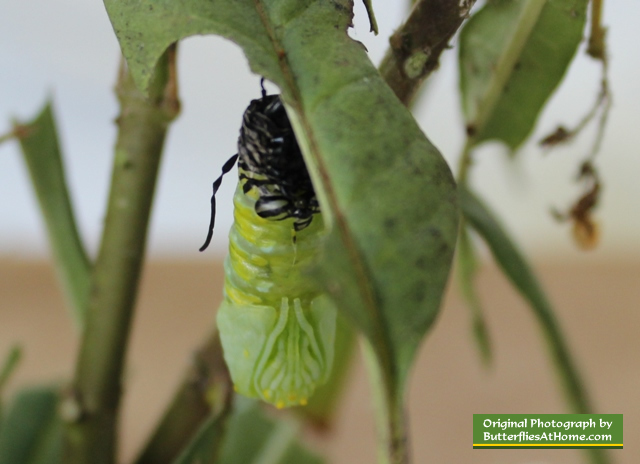
Monarch Butterfly caterpillar in its chrysalis ... carefully blending with nature!
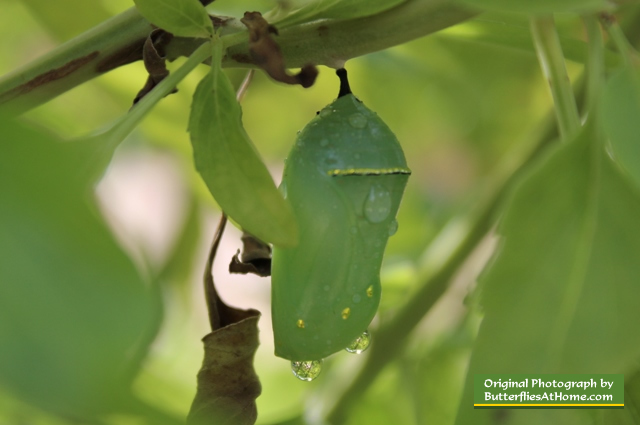
Monarch Butterfly chrysalis ... on a brick wall !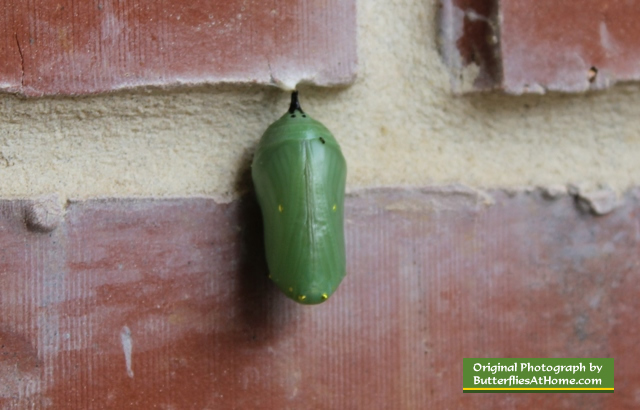 |
Chrysalis on the slick metallic surface of a BBQ grill
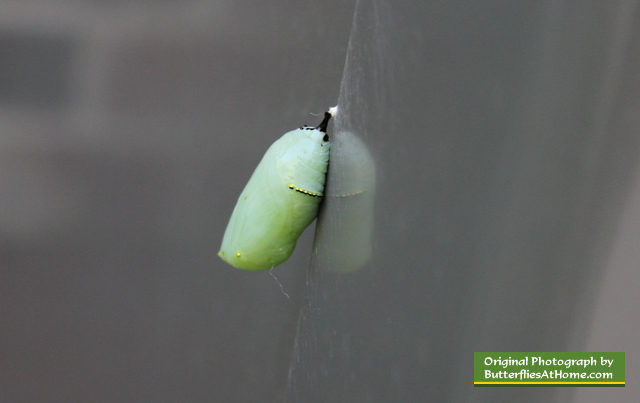 |
Monarch chrysalis ... dark and clear, with the butterfly ready to emerge
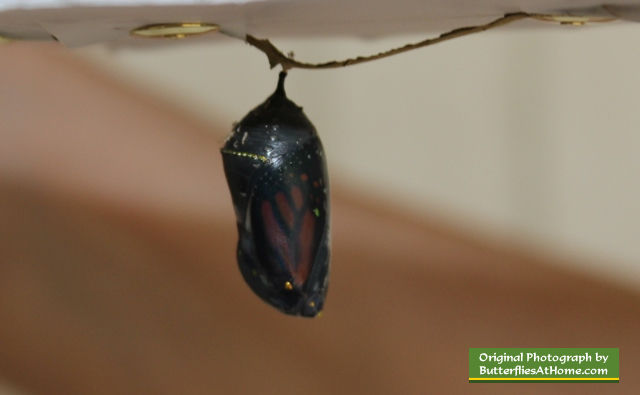
A beautiful new Monarch Butterfly ... minutes after eclosing from 10 days in its chrysalis
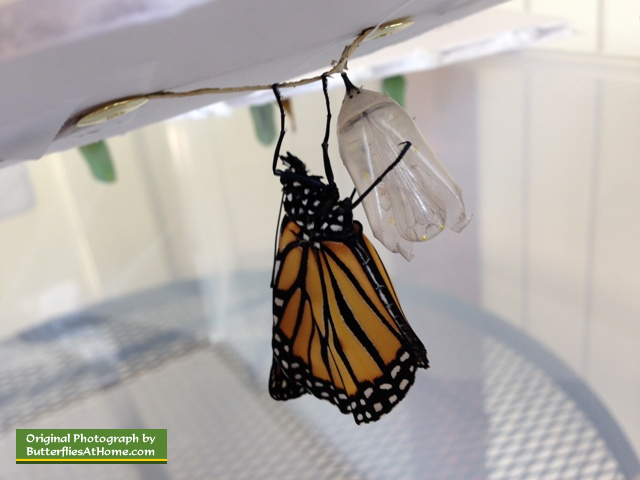
Monarch Butterfly Tagging
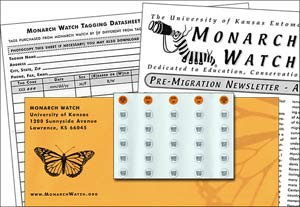 MonarchWatch.org tags and tagging data sheets MonarchWatch.org tags and tagging data sheets |
Studies continue yearly on the migration patterns of Monarch butterflies. One research tool is tagging, used to associate the location of capture with the point of recovery for each butterfly. The data from these recaptures are used to determine the pathways taken by migrating monarchs, the influence of weather on the migration, the survival rate of the monarchs, etc.
MonarchWatch.org operates a tagging system in which each tagged butterfly has a tag code (three letters and three numbers). The tags are printed with waterproof ink on polypropylene sheets that have special 3M adhesive on the back. The printed tags are placed on a backing from which they can be easily removed. They are organized in groups of 25 consecutive numbers/tags per sheet.
Read more about tagging and to order your tags at MonarchWatch.org
Shown below are some of the tags our enthusiastic young group placed on Monarch caterpillars.
Carefully placing a Monarch Watch tag on a Monarch Butterfly |
Monarch Watch tag in place on a Monarch Butterfly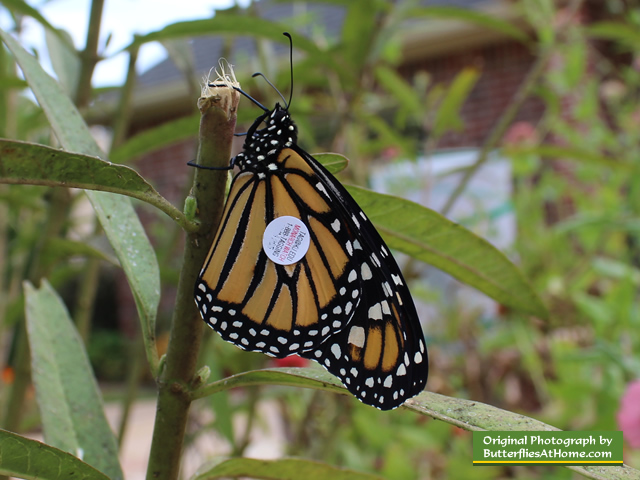 |
 |
|||
Check out these popular butterfly items at our Amazon Store |
|||
| Kaufman Field Guide to Butterflies of North America 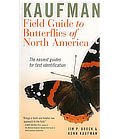 |
The Life Cycles of Butterflies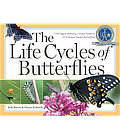 |
Peterson First Guide to Butterflies and Moths of North America 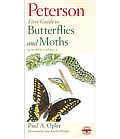 |
|
Outdoor Butterfly Hanging Flag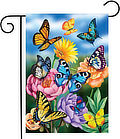 |
Butterfly Habitat Cage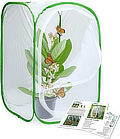 |
Butterfly Sterling Silver Pendant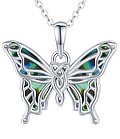 |
|
|
|||
Monarch Waystations
Monarch Waystations are places that provide resources necessary for monarchs to produce successive generations and sustain their migration. A waystation can be anywhere ... a home backyard, park, school or elsewhere.
Without milkweeds throughout their spring and summer breeding areas in North America, Monarchs would not be able to produce the successive generations that culminate in the migration each fall. By creating a Monarch Waystation you can assist in Monarch conservation and help the preservation of the species.
read more about how to register your Monarch waystation
